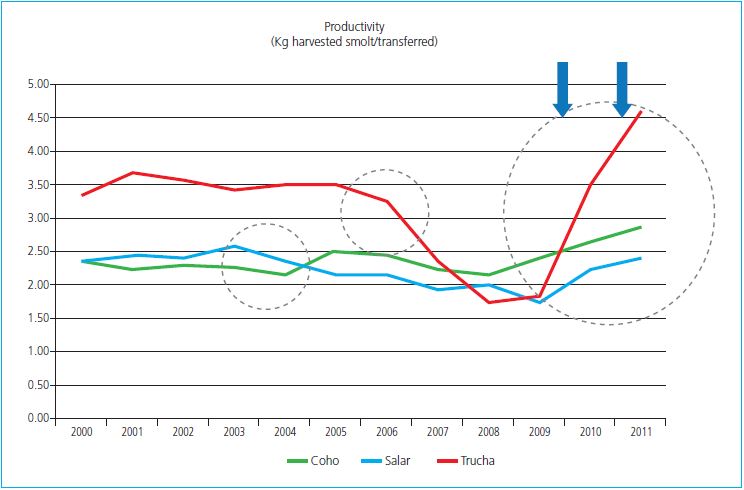5.3. Biosecurity planning and disease control
Diseases cause up to 40 percent of all losses in aquaculture systems, so biosecurity is an essential component of proper farm management at the site level. Diseases can spread to and from wild animals in the water surrounding a farm and through the water to other farms, and thus they are of concern to all stakeholders locally and within an aquaculture zone. Individual farms must maintain strict measures to prevent diseases coming into the farm (e.g. using certified disease-free stock), and maintain healthy and unstressed stocks and implement good hygiene practices so that diseases cannot gain a foothold and spread.
Most diseases affecting aquaculture organisms are more or less ubiquitous, present in low numbers in wild populations or in the environment. In most populations, some individuals will be resistant to a disease, but could still be a carrier. The onset of a disease outbreak not only requires the pathogen to be present, but stocks will also need to be in a vulnerable state, typically induced by some kind of stress. Common stressors in aquaculture include rough handling, low dissolved oxygen, inadequate feeding, and temperatures being either too high or too low or fluctuating. The combination of stressed fish and pathogen presence can lead to a disease outbreak.
The World Organisation for Animal Health is the leading international authority on disease management, including fish and shellfish. It proposes guidelines, published as the Aquatic Animal Health Code (available at www.oie.int/international-standardsetting/ aquatic-code/access-online). Additionally, the fundamentals of aquaculture animal disease management have been reviewed by Scarfe et al.
(2009). The basic components of a farm- or site-level biosecurity plan are:
• Screening and quarantine—all animals coming onto the farm should be certified disease free and tested for disease on arrival, and be maintained in separate holding facilities for a period of time to ensure that they are not infected.
• Isolation—nets, tanks and other equipment should be routinely disinfected, and farm workers should
FIGURE 4. Changes in productivity for three species of fish (kg harvest per smolt) under overcrowded (pre-2009) and properly spaced (post-2008) farm density

Source: Data from Alvial (2011).
maintain good hygiene, including handwashing and foot or boot washing. The amount of vehicular traffic (cars, boats) between the farm and the surrounding area should be kept to a minimum and disinfected upon return when possible.
• Proper handling—to avoid stress, fish should be kept in well-oxygenated water at an optimum temperature during holding and transport, and handled as little as possible during transport and when on site.
• Proper stocking density—in addition to causing stress, high-density conditions increase the frequency of contact among individual fish, leading to increased rates of disease transmission and infection.
• Regular monitoring—one of the first signs of disease is loss of appetite. Fish should be monitored closely during routine feeding to ensure that the fish are eating well and are healthy. Suspect animals should be removed immediately.
• Veterinary services—a licenced veterinarian should sample the farmed stock at regular intervals to ensure that any latent problem is detected as early as possible. If a government veterinarian is not available, farmers should call on a local specialist.
A more detailed analysis of the biosecurity implications for spatial planning and management can be found in Annex 2. Overall, a well-managed site, with maintained and healthy, well-fed stock along with appropriate and implemented hygiene procedures, reduces the likelihood of a disease outbreak and transmission between sites.